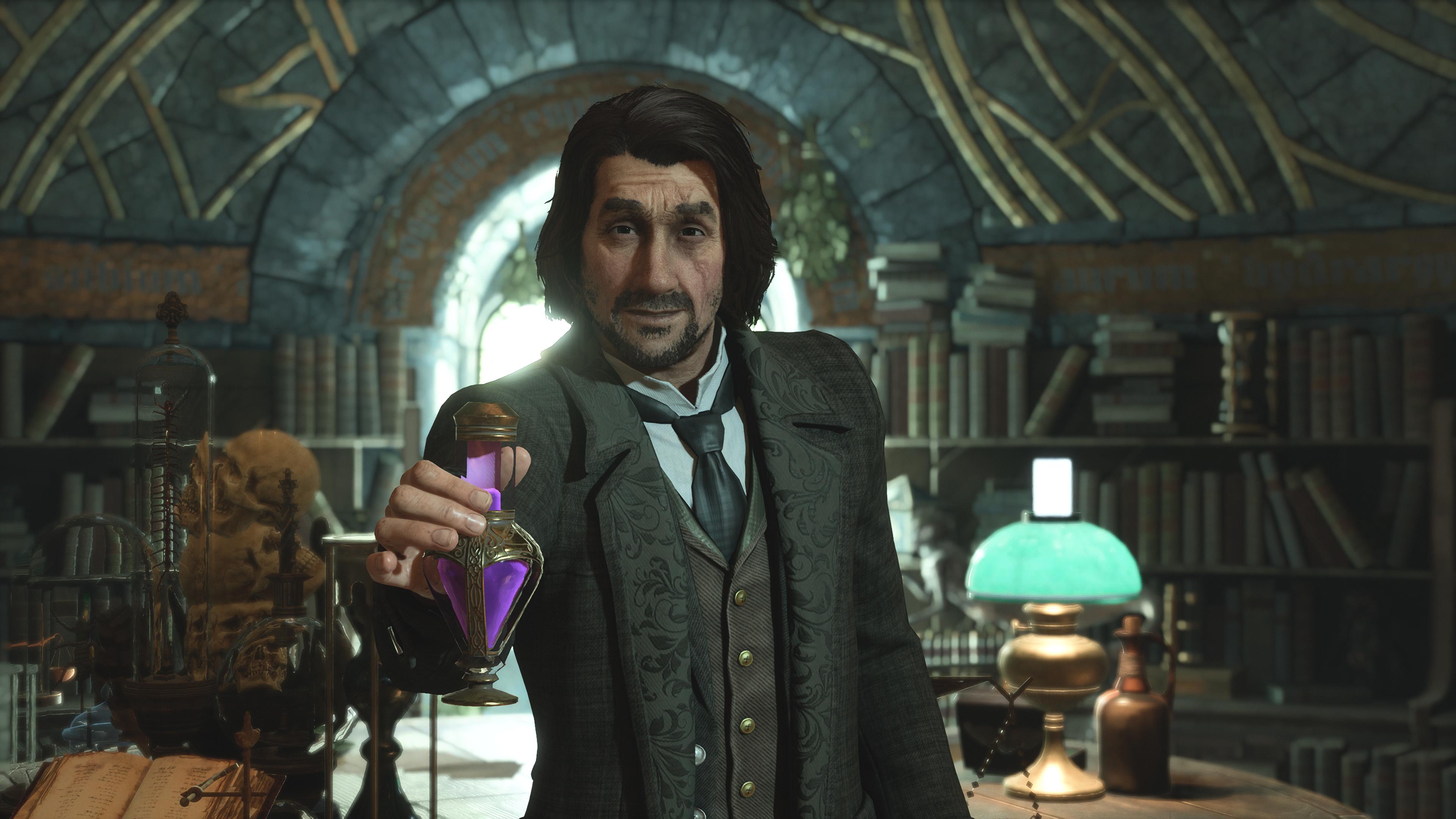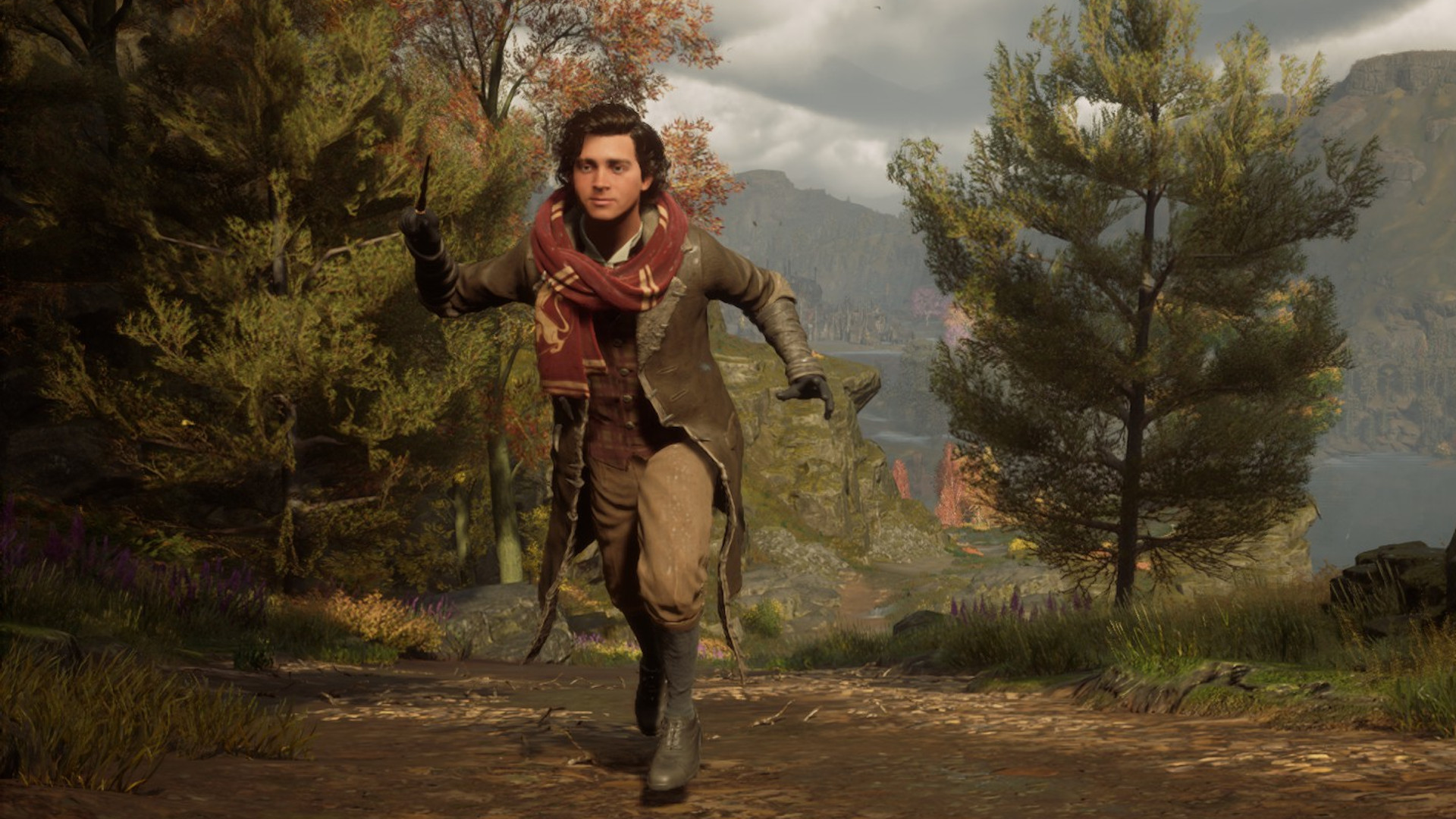Our Verdict
Hogwarts Legacy is a great game haunted by a terrible creator.
PC Gamer's got your back
What is it? An open world RPG in the Harry Potter universe
Expect to pay: $60/£55
Release date: February 10, 2023
Developer: Avalanche Software
Publisher: Warner Bros. Interactive
Reviewed on: RTX 3060, Ryzen 7 5700G 3.8Ghz, 16GB RAM
Link: Official Site
I was over 20 hours into Hogwarts Legacy before it revealed that, on top of being an expansive RPG with skill trees, wizard combat, crafting, environmental puzzles, and loads of sidequests, it's also a quaint home decorating game with a splash of zoo management. This is a much larger game than I think anyone was anticipating and as I've completed the main quest and dozens of sidequests over 50 hours, I'm still surprised by how good each individual element is.
It certainly suffers from a meandering start and distracting technical issues, but once I was set free to explore the entirety of Hogwarts and miles of countryside surrounding it, I enjoyed Hogwarts Legacy in the same ways I did The Witcher 3 or Red Dead Redemption 2: moseying across a convincingly rendered world at my own pace, letting myself disappear into a character I'm increasingly invested in.
Like those open-world classics I just mentioned, Hogwarts Legacy is a game you've probably played before, but also a rarity: a big-budget RPG attempting to bottle up all of the prestige, splendor, and expectations of a massive media property into a seamless sandbox. For the most part, it nails it. This is Harry Potter's Arkham Asylum moment—a game telling its own story in an established world, unshackled by the restrictive deadlines and creative boundaries of a movie tie-in, created by a studio that was itself once relegated to obligatory marketing products like Toy Story 3: The Video Game.
Hogwarts Legacy had a firm grasp on my brain throughout my playthrough. I'd catch myself thinking about zapping dark wizards with blasts of Confringo when I should be preparing dinner or pondering what scarf goes best with my new favorite coat, which plant I should grow to brew invisibility potions quicker, and whether or not the game will ever stop hitching when I move between Hogwarts' many towers (it won't). I'm also, unfortunately, thinking about JK Rowling.

Wizard bowl
You can't walk 10 feet without a part of Hogwarts castle coming alive.
Usually it’s an uncomplicated thing when games are good. We like them, they surprise us, I write about it, it's fun. But the fun of Hogwarts Legacy forms a unique set of conflicted feelings: I’m enjoying a game that’s an extension of JK Rowling, a powerful person who's used their platform to make transphobic comments in the last several years, applying her wealth and fame to promote an ideology that rejects and further marginalizes one of society's most vulnerable communities.
Hogwarts Legacy isn't written by JK Rowling or directly adapted from her stories. In fact, Warner Bros. and Portkey Games (the game publishing arm of Harry Potter properties) go as far as to say that she was "not involved in the creation of the game" at all. Still, it's built upon the world that she created and inherits some of its problems, particularly its portrayal of goblins and "house elves". Its success is likely to benefit her both culturally and financially.
It will also benefit the talented folks at Avalanche Software, who have built a rich, almost annoyingly detailed world that routinely exceeds its source material in terms of quality and inclusivity. Hogwarts Legacy is full of simple but harmonious systems that keep things fun and accessible:
- Wizard duels: A unique take on ranged combat where no aiming is required but spacing, dodging, and countering is key. Think Batman with cooldowns (and more murder).
- Exploration: The world is surprisingly large, and gets bigger when you can simply fly anywhere you want, anytime.
- Loot: Your clothes, cloaks, scarves, facewears, and hats have Destiny-like offensive/defensive stats, but you can just set your cosmetic look to whatever you want.
- Collectibles: There's a seemingly endless list of things to find across Hogwarts, often concealed behind a micro-puzzle. Not enticing enough to seek out, but fun to grab on the way to bigger things.
- Talking: You do a lot of it, often with two or three dialogue choices that express a chosen personality within bounds (but only rarely seem to influence the outcome of interactions).
- The Room of Requirement: A personalized living space for your wizard with an almost Animal Crossing-level of decoration options. Eventually, it gets a lot bigger.
The single most impressive aspect of Hogwarts Legacy is Hogwarts itself. Developers love to describe their games as "living, breathing worlds" but it's hard to think of a better way to characterize the titular castle.
You can't walk 10 feet without a part of Hogwarts castle coming alive: books reorganize themselves on shelves, suits of armor salute passersby, hedges trim themselves to perfection, ghosts float around telling jokes, textbooks flutter above passing students, and paintings animate or conversate as if the MOMA switched to the .gif standard. My favorite hallway of Hogwarts is this unassuming corridor near a courtyard where two golden suits of armor slyly antagonize each other with a kick each time I pass by. One time the right armor, after it'd presumably had it up to here with lefty's shenanigans, donned its mace and beat the everloving crap out of the other guy.
That grandeur isn't always a blessing, though. Avalanche's dogmatic pursuit of a realistic Hogwarts has made the place an honest-to-god maze. Central Hall alone spokes off in six or seven directions, each spiraling up toward classrooms or down into dungeons. I've never climbed more videogame stairs in my life—I'm winded just thinking about it. I usually like to disable navigational markers in open world games and learn the map myself, but since I don't have three years to spare, I constantly hit the button that conjures a golden trail to my destination.
Coming of age
As the stakes of Hogwarts Legacy's story get higher, it becomes disinterested in cozy, comforting school life.
The beginning hours of Hogwarts Legacy immersed me pleasantly in the life of a student: attending classes, making fast friends, and getting up to some harmless teen mischief like sneaking into the library after hours. I loved that learning new spells was organically weaved into these personable cutscenes and looked forward to every return trip to Potions or Defense of the Dark Arts. It's in these moments that I felt the most at home at Hogwarts, but as I progressed, the game became less about being a student. I sorely missed seeing "go to class" appear on my quest log after I'd mastered all the basic spells.
It's around the halfway through the school year that the gaps in Hogwarts' fantasy become more noticeable. For as reactive the world can be to your presence, it's not especially interactive—you can grab an apple from a bowl or sip tea in the common room, but you can't sit in chairs, have dinner in the Great Hall, or make small talk with students. Eventually I felt more like a visitor in a museum of puzzles, which is fun to pick apart in its own way but less gratifying than, for instance, chopping wood or swapping stories in Red Dead Redemption 2's camp.
As the stakes of Hogwarts Legacy's story get higher, it becomes disinterested in cozy, comforting school life. Developing in the background of my wizard's first days of class is a mysterious ancient magic that apparently only I can wield and a goblin rebellion that eventually becomes impossible to ignore. More quests started dragging me out into the highlands, where everything wants to kill me, even when I really just wanted to hang with my buds. By the latter half of the story, student hijinks are replaced by grim wizarding warfare—the same bestie who snuck into the library with me in the first act of the story is eventually raiding mines and slaying goblins, spiders, and poachers with me by the dozens.

If the plot of Hogwarts Legacy is starting to sound like its source material, that's because it's basically Harry Potter set to 1.75x speed. The parallels go beyond coincidental and well into distracting: a protagonist who quickly proves to be a uniquely gifted wizard, gets loads of special attention and perks from professors who supposedly have hundreds of other students (does every student get to craft a home base inside the Room of Requirement, or just me?), and wields a unique power that constantly lands them in real danger from villains. It didn't help that I insisted on joining Potter's house, Gryffindor, despite placing into Hufflepuff.
I really wish Avalanche had gone in a more original direction here, if not to distinguish itself from Harry Potter, then because I'm tired of playing The Most Important Person in videogames. Low-stakes stories are underrated and, like The Witcher 3, some of my favorite moments in Hogwarts Legacy came from the strangers I met accepting random sidequests in the highlands—heisting plants for a spurned business partner seeking revenge, looking into a weird statue for an old lady, or playing detective for a vendor who thinks his sister is robbing him blind. I must've checked off a few dozen sidequests in my playthrough and kept finding more as I wrapped the main story. Warner Bros. says there are over 100 total sidequests out there and I believe it.
Killing curse
When Harry and Voldemort square off in their final battle at the end of The Deathly Hollows, magical combat looks sort of boring.
Hogwarts Legacy often buckles under the weight of its meticulous world.
They're glaring and grimacing as they point sticks at one another without moving their feet, sort of like a very boring episode of Dragon Ball Z. But thankfully, Hogwarts Legacy manages to make magic cool. That's partially because, instead of returning to the stilted stationary wand combat of the old Harry Potter games, Hogwarts Legacy takes a cue from its fellow Warner-published Batman games.
Your shockingly capable 15-year-old often takes on six or seven baddies simultaneously, ducking and dodging out of the way of danger and juggling enemies with levitation spells. Attacks will automatically hit who you're targeting, but the challenge comes in choosing the right spells to exploit enemy weaknesses, manage cooldowns, block or dodge attacks, and keep your distance from beefed up goblins with axes.
A lot of the fun is owed to top-shelf animation work—the way my wizard chains spells together with expressive flicks of the wand, twirl or lean into an attack to give it some extra oomph, or deflect a magic missile without looking at it makes every fight miles more dramatic and fun to watch than the films.

Hogwarts is a very easy game (so much that I recommend everyone give the hardest difficulty a try), but I never got bored of swapping between my dozen-plus spells to slice, burn, freeze, explode, or curse jerks into the ground. That said, it never stops feeling a little weird to go on murdering sprees outside school grounds one minute and then show up to broom class the next.
What did get boring was all the repeat boss battles. There's a cool troll boss fight near the beginning of the game that really flexes your dodging skills. I've fought clones of that exact troll at least eight or nine more times since then in both optional and mandatory quest moments and eventually got so sick of them that I'd do everything in my power to stealth around them. In fact, all enemies bigger than my wizard can go in the bin simply because they're too large to hit with the single most enjoyable spell combo in the game—a frontflip into the air with Flipendo, followed by a barrage of magic bolts while they helplessly float, ending with a piledrive into the dirt with Descendo.
Shaky ground
Hogwarts Legacy often buckles under the weight of its meticulous world. Persistent technical issues wore on me throughout my playthrough. Most noticeable is consistent stuttering when entering new areas of Hogwarts castle or the storefronts of Hogsmeade. As early access players have also reported, the PC version chugs as if your system can't handle the game when it's not actually pushing your hardware very much at all (in the some of the worst dips I experienced, not even 60% of my RTX 3060 was being utilized). CPU doesn't seem to be the bottleneck either, leaving many to believe it's a shader compilation issue, a somewhat common problem in massive Unreal Engine 4 games.
Honestly, it sounds worse on paper than it feels in action. The stuttering didn't get on my nerves because it'd mostly happen while on the way to places, not during combat or conversation. My framerate bounced all over the place depending on location, too, with the lowest point of my tests around 45 fps in the dense streets of Hogsmeade. That said, my average framerate was decent enough (average of ~60 fps with everything set to medium and DLSS on Quality mode) that I wouldn't have noticed all the inconsistency had I not turned on a performance overlay. I played most of the game without checking what my framerate was and I can't recommend it enough.
The only truly annoying hiccups are the brief, yet frequent pauses at the doors of Hogwarts while the game is loading whatever's on the other side. These loads are different from stutters—a spinning loading symbol actually appears on the door while you wait. Thankfully I've never had to wait more than more than two seconds for a door to open on my setup, but it's a blemish on an otherwise immersive world.
As of launch day, Hogwarts Legacy also has a significant pop-in problem. Arrive at a location by broom slightly faster than the game anticipated and students will fade into existence. Coasting high above the countryside can also confuse the engine as it spawns and despawns entities below you. Render distances and streaming budgets are technical hurdles that most open world games control by keeping players grounded and curating lines of sight, but Hogwarts doesn't have that luxury.
Hogwarts also doesn't have the luxury of just being a videogame. It's so rare that we get a licensed, blockbuster game like this—one that mostly delivers on the enormous scale of an intricate fantasy world that's had decades to develop in our minds and on film. But Avalanche Software's achievement is dented by its association with a creator who has wielded their power and fortune to undercut the legal and social acceptance of trans people.
What could've been a pure moment of celebration for a series that's overdue for a great videogame is complicated by the fact that its success is a win for JK Rowling, and all the bad feelings associated with the desire to play the cool new wizard RPG.
Hogwarts Legacy is a great game haunted by a terrible creator.

Morgan has been writing for PC Gamer since 2018, first as a freelancer and currently as a staff writer. He has also appeared on Polygon, Kotaku, Fanbyte, and PCGamesN. Before freelancing, he spent most of high school and all of college writing at small gaming sites that didn't pay him. He's very happy to have a real job now. Morgan is a beat writer following the latest and greatest shooters and the communities that play them. He also writes general news, reviews, features, the occasional guide, and bad jokes in Slack. Twist his arm, and he'll even write about a boring strategy game. Please don't, though.


